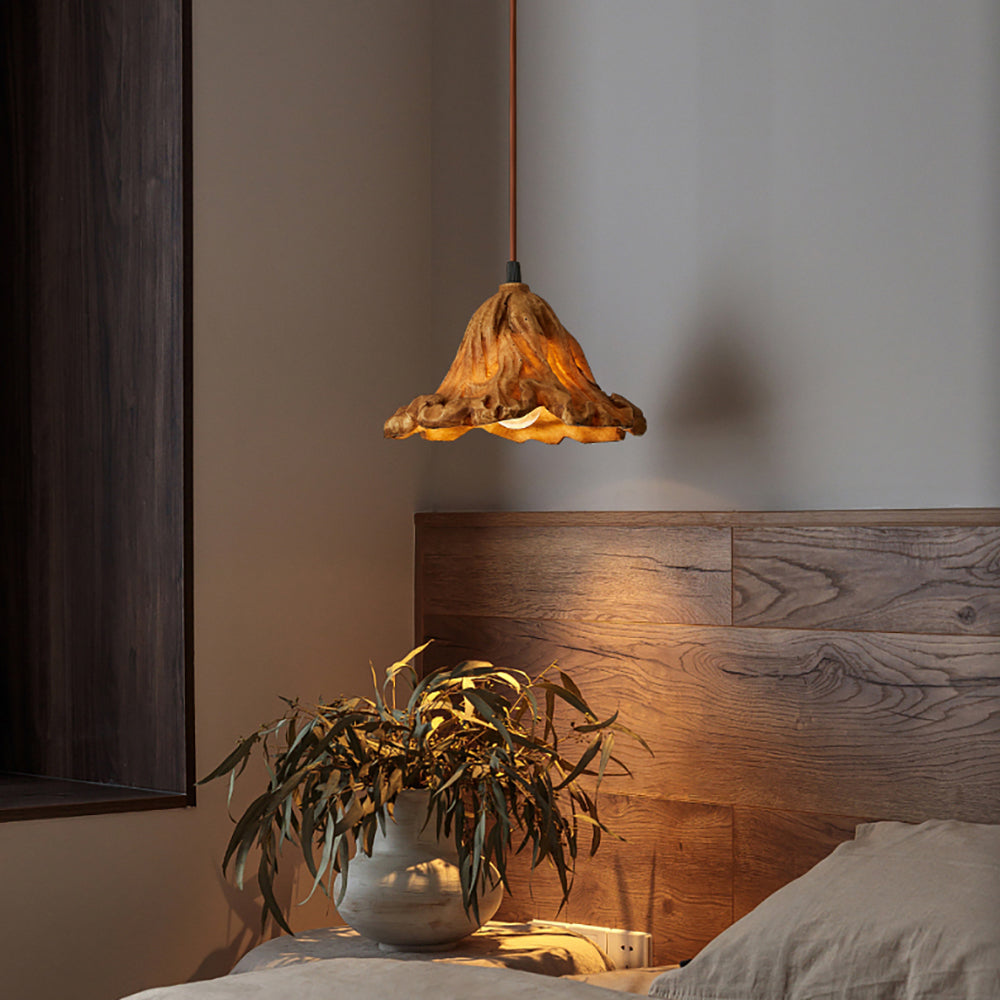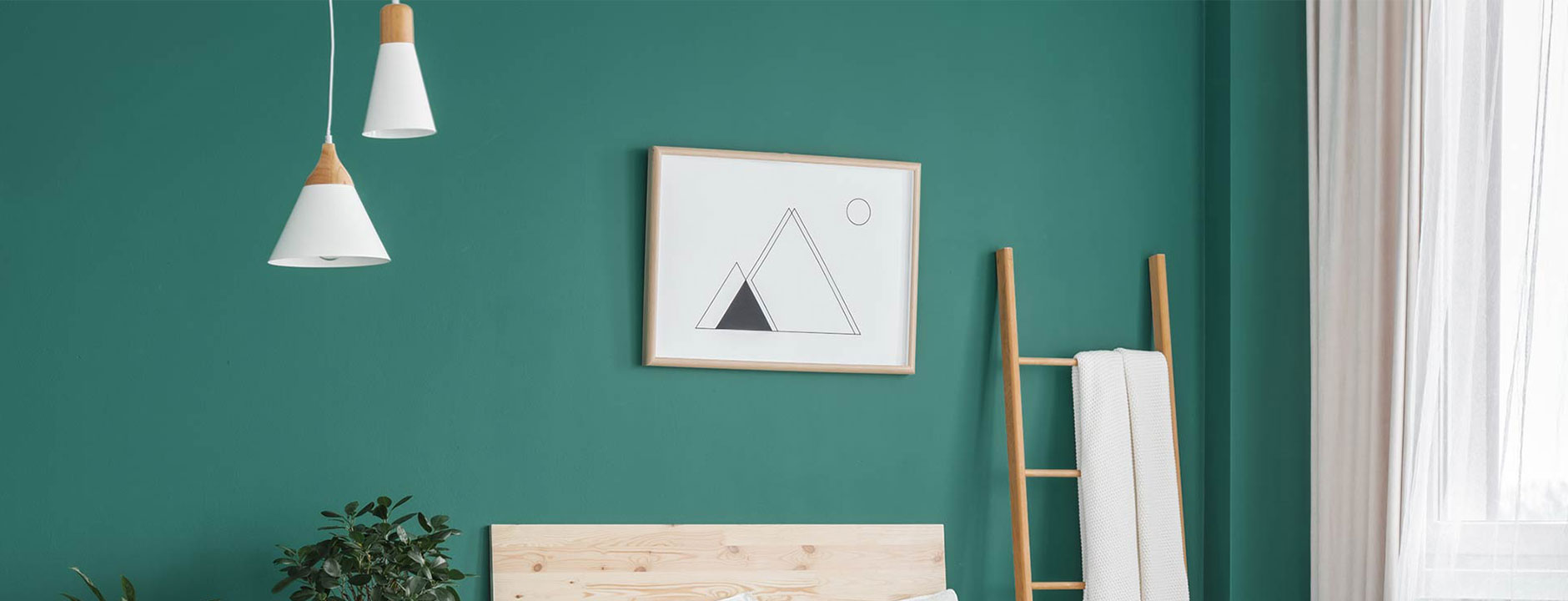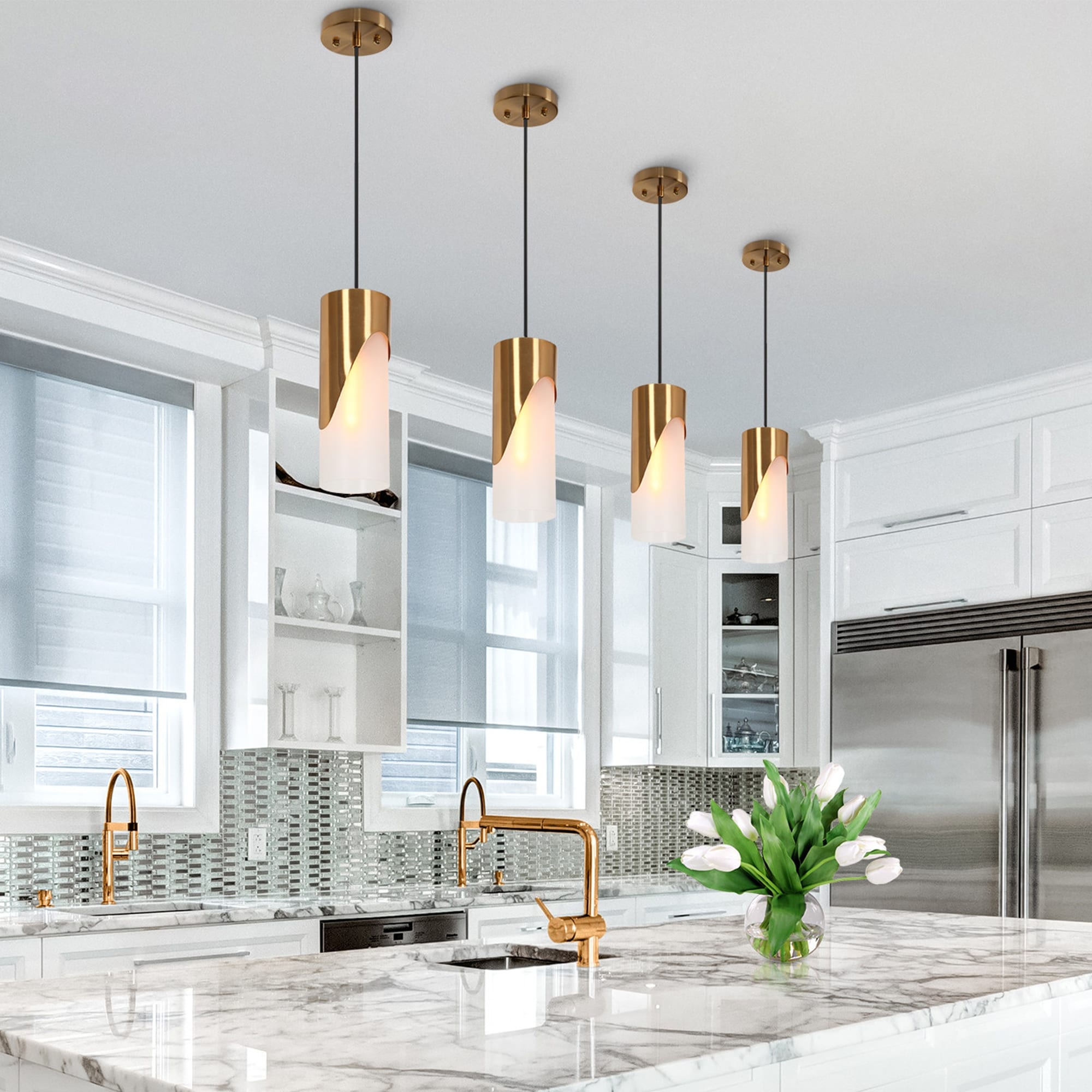A Comprehensive Guide to Installing and Preserving Your Pendant Light
Setting up and preserving a pendant light requires cautious planning and implementation. Proper height measurements can boost both functionality and style. Vital devices and a clear installation procedure are essential for a successful setup. Regular upkeep assurances durability and efficiency. Understanding these components can transform a room. However, understanding where to begin may appear intimidating. What actions should one prioritize to attain the finest outcomes?
Understanding Necklace Light Styles
While numerous property owners seek to improve their rooms with necklace lights, recognizing the numerous designs offered is important for making an educated choice. Pendant lights can be found in a plethora of styles, each offering one-of-a-kind aesthetic and practical advantages. Standard pendant lights often include classic shapes and materials, such as glass or steel, supplying a timeless appeal. Contemporary designs, on the various other hand, may include strong colors and ingenious materials to create striking centerpieces.
Industrial-style pendants commonly make use of resources like exposed light bulbs and rustic finishes, suitable for lofts and contemporary settings. For a more whimsical touch, vintage-inspired choices stimulate nostalgia with detailed information and retro coatings. Additionally, minimal styles focus on simplicity and clean lines, appealing to those who prefer downplayed style. Understanding these varied designs enables homeowners to select pendant lights that not just enhances their style yet likewise serves their functional lighting needs effectively.
Determining the Ideal Height for Your Pendant Light
Exactly how does one figure out the perfect elevation for a necklace light? To achieve the most effective capability and visual appeal, several elements should be considered. Normally, a pendant light need to hang 30 to 36 inches above an eating table to ensure sufficient lighting without blocking sights. In rooms with high ceilings, the fixture might be placed slightly greater to maintain proportionality.
For kitchen area islands, a height of 28 to 34 inches above the kitchen counter is generally advised, enabling sufficient light insurance coverage while preserving an inviting ambience. In living locations, the pendant needs to be hung at an elevation that complements the bordering design and does not produce a threat for people walking underneath it.
Ultimately, individual preference and room measurements play considerable roles in figuring out the excellent height. Evaluating various heights before final installation may assist achieve the wanted impact and performance.
Devices and Products Needed for Setup
Effective setup of pendant lights needs a particular set of materials and tools to ensure a smooth procedure. Essential tools include a screwdriver, cord stripper, and a drill, which help with secure component add-on and correct electrical wiring. A voltage tester is vital for confirming security by ensuring that power is off prior to beginning any type of electric job.
Along with devices, particular products are needed for setup. These consist of the necklace light component itself, electrical wiring, cord nuts for safe connections, and mounting hardware. A ceiling hook might additionally be called for, depending upon the fixture's design.
For included safety and security and comfort, a ladder will certainly assist within high ceilings, while a degree assures that the light hangs evenly. Preparing these products and devices ahead of time improves the installment procedure, making it more efficient and effective. Proper prep work is important to attaining an effective necklace light installment.
Step-by-Step Installation Process
With the necessary tools and materials collected, the installation process for necklace lights can begin. The power supply need to be transformed off at the circuit breaker to ensure safety. Next off, the installing brace needs to be attached to the electric box in the ceiling. After safeguarding it, the electrical expert's tape should be utilized to cover any subjected wires.
Following that, the pendant light's wires are attached to the matching cords in the ceiling: black to black (or red), white to white, and environment-friendly or copper for ground. When the connections are made, they need to be protected with wire nuts.
The necklace light can after that be affixed to the installing bracket, ensuring it hangs at the wanted height. The light bulb is inserted, and the power is transformed back on at the circuit breaker, enabling the new necklace light to illuminate the room.
Preserving and Cleansing Your Pendant Light
What actions should be taken to assure the longevity and visual allure of pendant lights? Regular maintenance and cleaning are crucial in preserving their beauty and capability. Dirt and dust can collect on pendant lights, diminishing their shine. To clean up, a soft, lint-free cloth or microfiber towel should be made use of, in addition to a gentle cleaner appropriate for the surface material - Pendant Light. For glass or crystal pendants, a glass cleanser can improve clearness without streaks
It is a good idea to transform off the light and permit it to cool before cleaning. In addition, checking the fixture for loose light bulbs or links occasionally assures safety and peak performance. Changing light bulbs routinely protects against stress on electric elements if relevant. Keeping a safe environment by staying clear of exposure to moisture can considerably extend the life of necklace lights. Adhering to these steps will certainly keep pendant lights looking their finest while working successfully.
Repairing Typical Necklace Light Issues
When pendant lights breakdown, several common issues may occur, including flickering light bulbs, inaccurate installment, and voltage variations. Identifying the source is important for efficient troubleshooting and ensuring peak performance. Dealing with these problems quickly can enhance the long life and capability of pendant lighting components.
Flickering Light Bulbs
Flickering light bulbs can be a source of stress for home owners, often indicating underlying electrical concerns or basic maintenance needs. This sensation may stem from loosened light bulb connections, where the light bulb is not firmly suited the socket, triggering periodic call (Pendant Light). In addition, damaged or aging light bulbs might flicker as they near completion of their lifespan. Another usual reason is inconsistent voltage, which can develop from concerns within the electric system or overloading circuits. House owners must additionally look for harmed circuitry, as this can bring about flickering and present safety and security risks. Regular inspections and prompt substitutes are essential to guarantee correct functionality and to maintain a secure home atmosphere. Determining the origin cause without delay can protect against additional difficulties

Inaccurate Installation Concerns
Incorrect installation of pendant lights can bring about a variety of concerns that may resemble those triggered by flickering bulbs. Usual issues consist of loose wiring links, which can interrupt the circulation of electrical energy and lead to recurring lights. Additionally, if the placing bracket is not securely fastened, the pendant might hang unevenly, producing an unpredictable fixture that can create vibrations or noise. Incorrect bulb kinds or i was reading this electrical power can additionally contribute to performance issues, as inappropriate light bulbs might not operate effectively in the component. Poor spacing from the ceiling can create shadows or lower light circulation, reducing the desired impact of the necklace light. Identifying and resolving these installment mistakes is crucial for attaining correct functionality and aesthetic charm.
Voltage Variation Issues
Necklace lights can improve a room's atmosphere, voltage fluctuations can lead to significant efficiency concerns. These variations might create flickering lights, reduced brightness, or perhaps early bulb failing. To detect such problems, one must first examine the light's compatibility with the voltage supply. Making use of a multimeter can help determine voltage degrees and identify irregularities. If voltage problems continue, it may be required to evaluate the electric system for loose connections or faulty circuitry. Sometimes, seeking advice from a qualified electrical contractor is recommended to guarantee safety and conformity with local codes. Properly addressing voltage variations not only improves the performance of necklace lights but likewise expands their lifespan and improves total lights quality.
Enhancing Your Room With Necklace Light Positioning
Effective necklace light placement can significantly improve a room by sticking to excellent height guidelines, guaranteeing the best lighting level. Layering these lights with various other resources can develop a balanced atmosphere, highlighting centerpieces within the space. Attaining an unified look needs mindful consideration of both the component's placement and its partnership with surrounding aspects.
Optimal Height Guidelines
When contemplating the ideal height for necklace lights, a general standard suggests hanging them about 30 to 36 inches over a countertop or table surface. This height enables for optimum illumination while making sure that the light does not obstruct views or produce risks. In eating locations, pendant lights must be placed to boost the eating experience, typically around 28 to 34 inches above the table. For kitchen islands, keeping uniformity across numerous pendants can create a cohesive appearance; spacing them evenly and adhering to the advised elevation enhances functionality. It is vital to take into consideration ceiling elevation too, as higher ceilings may require adjustments to maintain symmetry and aesthetic appeal. Proper height placement greatly adds to the general setting of a space.
Layering With Other Lights
As necklace lights are integrated right into a broader lighting design, they can significantly improve the environment of an area. Their convenience permits them to be layered with ambient, job, and accent illumination, developing an unified equilibrium. Combining pendant lights with recessed lights can provide general illumination while highlighting particular areas. Job illumination, such as under-cabinet lights, can enhance necklaces in kitchens, ensuring capability without giving up design. Accent lights, like wall sconces, can additionally improve the setting, attracting interest to artwork or architectural functions. By tactically positioning these light resources, homeowners can accomplish depth and dimension, changing an ordinary room into a perfectly brightened establishing that satisfies different activities and moods.
Focal Factors and Equilibrium

Strategically placed pendant lights can work as enchanting prime focus within an area, drawing the eye and improving the general aesthetic. When picking pendant lights, it is important to consider their dimension, color, and form to guarantee they match the existing style. For instance, a bold, large necklace can develop a striking centerpiece above a dining table, while smaller components may work much better in collections to attain a balanced look. Furthermore, placing necklace lights at differing heights can include depth and aesthetic rate of interest to the area. Preserving equilibrium with various other aspects, such as furnishings and wall surface shades, will certainly make certain that the necklace lights boost the space without frustrating it. Thoughtful positioning changes the setting, creating a harmonious and inviting environment.
Frequently Asked Questions
Can I Install a Pendant Light in a Recessed Ceiling?
The inquiry of whether a pendant light can be set up in a recessed ceiling usually occurs. Usually, it is feasible with proper placing equipment, making sure correct support and electrical connections for safe and reliable installment.
What Sort of Light Bulb Is Best for Pendant Lights?
When choosing bulbs for necklace lights, LED options are typically liked as a result of their power efficiency and longevity. In addition, the color temperature level must match the desired atmosphere, with warm white being a preferred selection for comfortable setups.
Are Pendant Lights Safe for Outdoor Use?

Exactly how Do I Choose the Right Necklace Light Electrical Power?
Selecting the appropriate pendant light power level entails assessing the area's size, wanted brightness, and component compatibility. Typically, lower wattages suit ambient lights, while greater wattages provide job lights, guaranteeing functionality and aesthetic appeal.
Can I Use a Dimmer Switch Over With My Necklace Light?
The concern occurred whether a dimmer button could be utilized with a pendant light. Generally, if the light and bulb are suitable, a dimmer button can properly improve ambiance and control illumination degrees.
When pendant lights breakdown, a number of typical problems may arise, Your Domain Name consisting of flickering light bulbs, incorrect installment, and voltage changes. Incorrect installment of pendant lights can lead to an array of problems that might resemble those triggered by flickering bulbs. Insufficient spacing from the ceiling can produce darkness or reduce light circulation, diminishing the desired effect of the pendant light. Efficient pendant light placement can considerably improve a space by sticking to ideal height standards, making sure the appropriate illumination degree. When choosing light bulbs for pendant lights, LED choices are frequently liked due to their power performance and longevity.